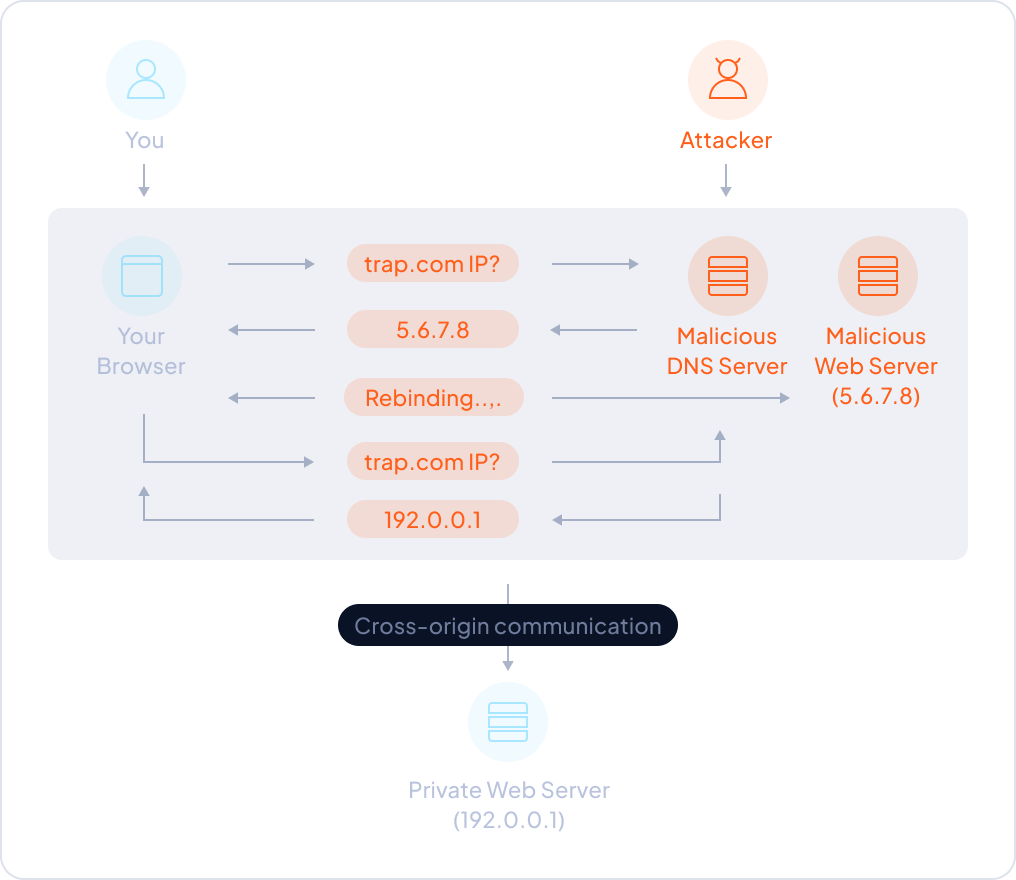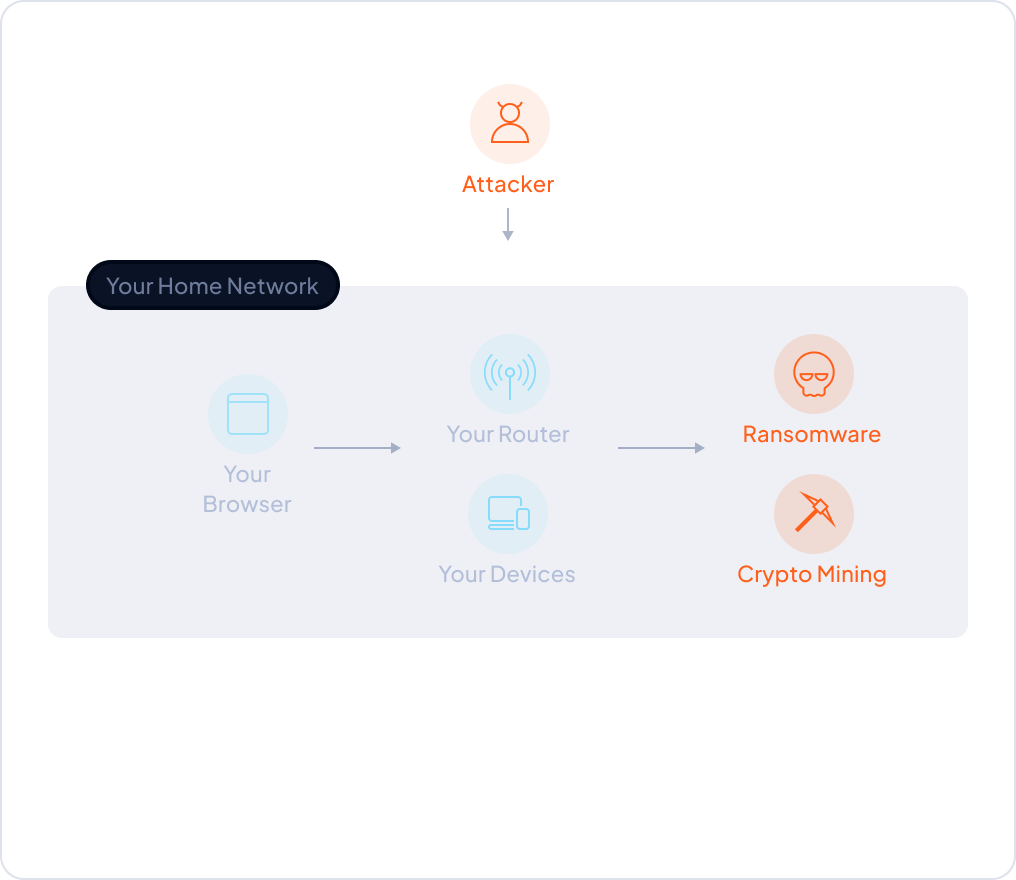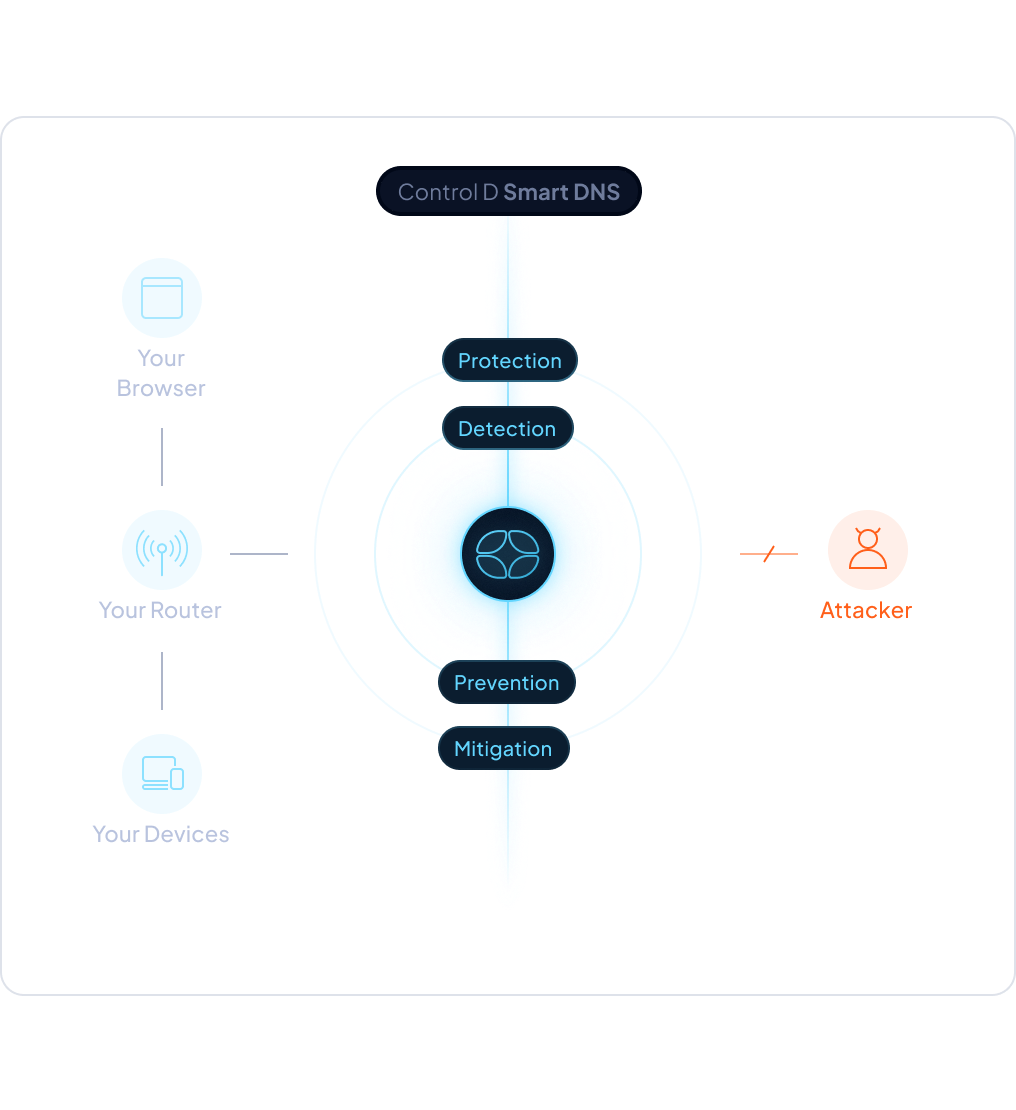DNS Rebind Test
Check whether your DNS requests can be hijacked by a malicious entity.
The browser trusts the hostname, so the script communicates with routers, IoT gadgets, or cloud-metadata services behind the firewall, stealing data or issuing commands.

They might change router settings, steal passwords, read files, or run code that installs malware or mines crypto. Because the traffic looks like it comes from you, firewalls don’t block it, leaving the attack hard to spot.

Turn on the same “DNS rebinding protection” switch in your router for extra safety. If you run your own DNS, enable the stop‑rebind option. Finally, lock sensitive devices with passwords in case anything slips through on every device.

Smart cameras, printers, and NAS boxes become exposed, letting the attacker spy or steal files. Internal dashboards like Grafana or Jenkins get hijacked, causing data leaks or code execution. Traffic looks local, so firewalls stay quiet until passwords change, devices crash, or bills spike. Recovery requires patches, resets, and replaced credentials.
Protect against DNS Rebind surprises with Control D
Get the best DNS filtering solution that has rebind protection built-in.
Frequently asked questions
DNS rebinding is a technique that lets attackers bypass the same-origin policy in web browsers, allowing malicious websites to access private networks or local devices. It can be used to steal data, control routers, or exploit internal services.
DNS rebind protection blocks DNS responses that resolve to private or local IP addresses when they originate from untrusted domains. This prevents malicious sites from tricking your browser into talking to devices on your internal network.
Yes—especially if you use smart devices, routers with web interfaces, or local servers. Without protection, a simple visit to a shady website could expose your internal network to attack.
Absolutely. Attackers often use DNS rebinding to access router admin panels, change settings, or control IoT devices remotely. DNS rebind protection stops these attempts at the DNS level before they reach your network.
Not all do. Some DNS services and VPNs offer built-in rebind protection, but many don't. It's important to choose a provider that explicitly blocks DNS rebind attempts to ensure full protection.
